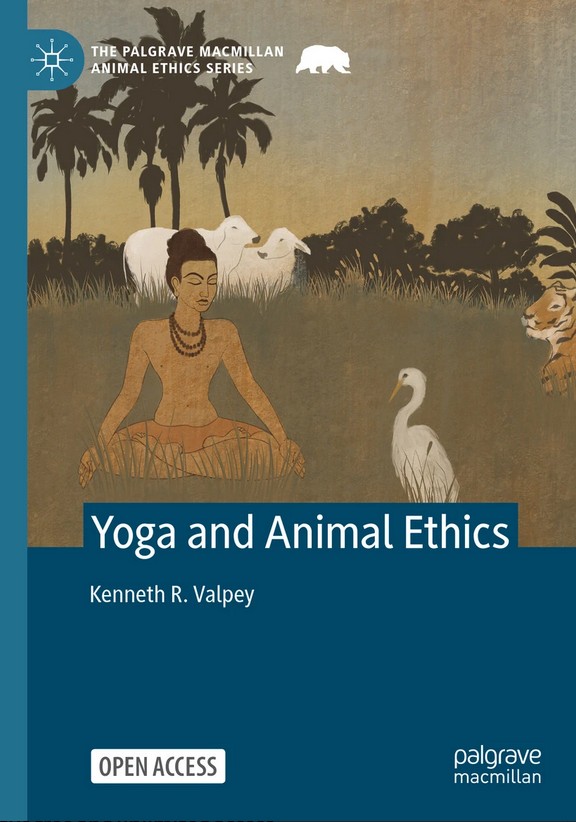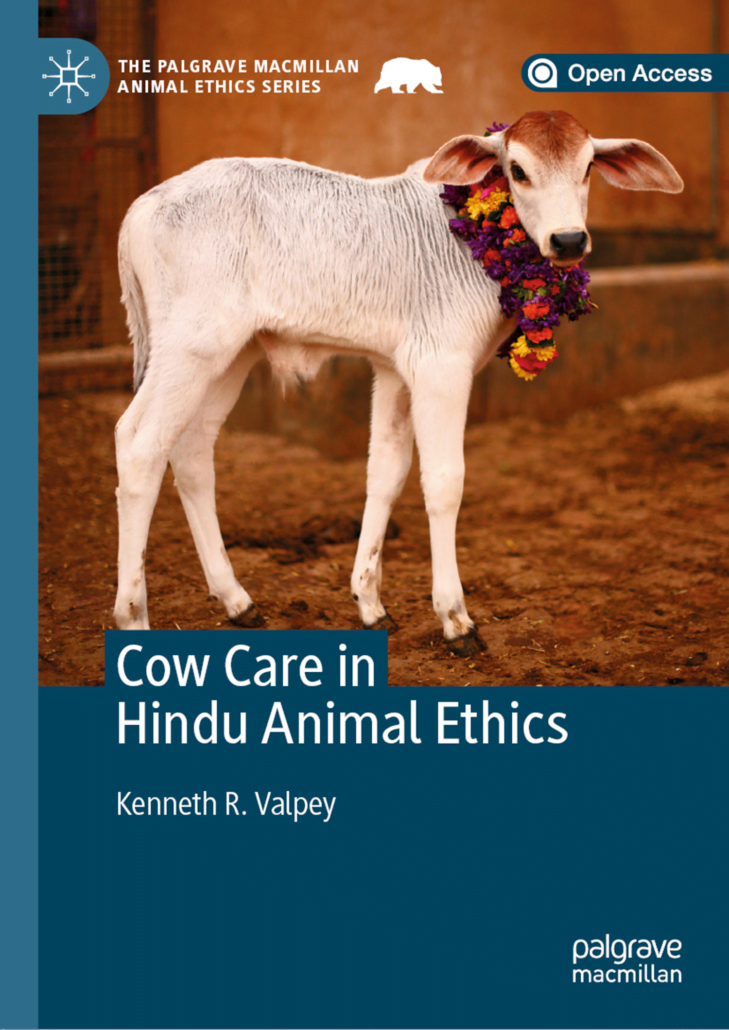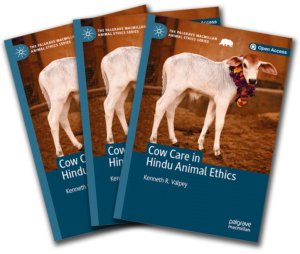About the Yoga and Animal Ethics book
By Kenneth R. Valpey
Series: The Palgrave Macmillan Animal Ethics Series
In recent years, the climate crisis and environmental devastation have ignited discourse on the dangerous vision of the “ideal human” that emerged in the early modern era and has taken on the flavor of technofeudalism in recent years.
This is a vision that elevates the ideal of the (presumed) unrelated, unconditioned, radically independent human, grounded in the denial of our interdependence with the living systems of the Earth in general, and our interconnection with animal species in particular. The sentience, personhood, agency, and intrinsic worth of non-human animals are undermined by the hyper-rationalist vision of humanism, laying bare their lives for exploitation and execution.
The Anthropocene, with its sixth mass extinction, a rapidly escalating climate emergency, and the breach of the planet’s bio-geophysical integrity requires a critical assessment of what it means to be fully human—and this entails a thoroughgoing reevaluation of our relationship with nonhuman animals.
Important theories, such as critical posthumanism, are theoretical interventions that question the norms, privileges, and boundaries of the “human.” To find a way forward in a time of civilizational and ecological crises, the discursive oppositions of critical frameworks suggest a need for the erasure of human exceptionalism and its replacement by an integrative inclusivism of the ecosphere.
In recent years, alternate epistemologies—ones that extend the concept of sentience and intrinsic value to the more-than-human world—have emerged. This is evident in a number of theoretical rubrics, such as New Materialism and Object Oriented Ontology, which emphasize the agency and internal integrity of animals as well as natural phenomena and habitats, and even the self-organizing capacity of matter in itself.
Copyright information
The Palgrave Macmillan Animal Ethics SeriesISSN 2634-6672 ISSN 2634-6680 (electronic)
The Palgrave Macmillan Animal Ethics Series
ISBN 978-3-031-93360-8 ISBN 978-3-031-93361-5 (eBook)
https://doi.org/10.1007/978-3-031-93361-5
© The Editor(s) (if applicable) and The Author(s), under exclusive license to Springer Nature Switzerland AG 2025. This book is an open access publication.
Open Access This book is licensed under the terms of the Creative Commons Attribution 4.0 International License (http://creativecommons.org/licenses/by/4.0/), which permits use, sharing, adaptation, distribution and reproduction in any medium or format, as long as you give appropriate credit to the original author(s) and the source, provide a link to the Creative Commons license and indicate if changes were made.
The images or other third party material in this book are included in the book’s Creative Commons license, unless indicated otherwise in a credit line to the material. If material is not included in the book’s Creative Commons license and your intended use is not permitted by statutory regulation or exceeds the permitted use, you will need to obtain permission directly from the copyright holder.
The use of general descriptive names, registered names, trademarks, service marks, etc. in this publication does not imply, even in the absence of a specific statement, that such names are exempt from the relevant protective laws and regulations and therefore free for general use.
The publisher, the authors and the editors are safe to assume that the advice and information in this book are believed to be true and accurate at the date of publication. Neither the publisher nor the authors or the editors give a warranty, expressed or implied, with respect to the material contained herein or for any errors or omissions that may have been made. The publisher remains neutral with regard to jurisdictional claims in published maps and institutional affiliations.
This Palgrave Macmillan imprint is published by the registered company Springer Nature Switzerland AG.
The registered company address is: Gewerbestrasse 11, 6330 Cham, Switzerland





Cow Care in Hindu Animal Ethics. Kenneth R. Valpey. Palgrave Macmillan, 2020
/in Cow care project, ReviewsAre There Lessons from India about the Management of Cattle? A Review of ‘Cow Care in Hindu Animal Ethics’ by Kenneth R. Valpey
/in Cow care project, ReviewsMeet the Gir Family
/in Cow care project, Misc, Projects and activities